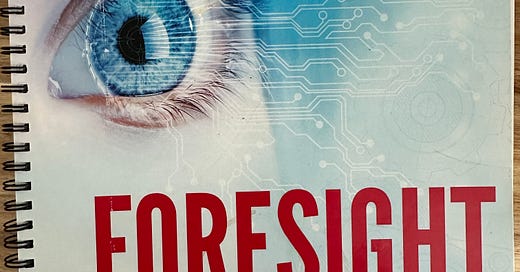The #1 Skill For Leaders To Master And How to Master It With Frameworks, Examples, And Action Items
Over 140 CEOs around the world say that being able to think like a futurist is the most crucial skill for leaders to master. But what does that mean and how do you actually master it? Read on!
This a preview article, to get access to the paid member section where I will walk through a futurist framework, give a real-example of how to use it, along with action items, triggers, and exercises that you can use, as well as ongoing strategies to get you practicing that “futurist” mindset, you will need to upgrade your subscription.
For the many of you around the world who are already paid subscribers, thank you for your support! Lots of amazing content is on the way and if there is something specific you want to see from me then please let me know.
A few years ago I wrote, The Future Leader, where I talked to over 140 CEOs around the world. I wanted to understand the most important mindsets and skills that current and aspiring leaders need to master in the rapidly changing world of work that we are all a part of. There are 4 mindsets and 5 skills.
I know there are lots of surveys conducted which ask thousands of employees what the most important skills are, but I wanted to go straight to the CEOs since they are the ones leading the companies.
I was surprised that the #1 skill by far that these CEOs identified as being most crucial for leaders, is the skill of the futurist.
If you go on LinkedIn you will find lots of people who stick “futurist” in their title. It sounds cool but 99.999% of the time you see that title it’s complete bullsh*t. Few people realize that you can actually get a professional certification in foresight (which is what I received at the University of Houston) and even a masters degree.
The field of foresight utilizes frameworks, critical thinking prompts, scenarios, and models to help you think about the future.
What does thinking like a futurist actually mean?
It’s not about predicting the future, it’s about helping make sure that you aren’t surprised by what the future might bring. I always use the analogy of chess.
When playing chess, top players are always thinking several moves ahead, they can’t predict what their opponent is going to do, but they can try to anticipate potential moves and then plan for their response. Thinking like a futurist is similar.
There are several concepts and models that futurists use but I have found that the cone of possibilities is the most practical, applicable, and fun.
We used to live and work in a more linear world where the pace of change was gradual and where things were more predictable. Today we see increasing complexity, more change and an accelerated rate of change, instability, greater risk, and reduced trust.
This means that we can’t just plan for one scenario or outcome. We need to be agile, to be able to pivot, and to think in terms of scenarios and options.
Again, this is the #1 skill for leaders. In the rest of the article for paid subscribers only, I’ll walk through the cone of possibilities, give a real-example of how to use it, along with action items, triggers, and exercises that you can use, as well as ongoing strategies to get you practicing that “futurist” mindset.
If you’re a paid subscriber you can also leave a comment on this post with your own scenarios and we can review them.
Keep reading with a 7-day free trial
Subscribe to Future Ready Leadership With Jacob Morgan to keep reading this post and get 7 days of free access to the full post archives.





